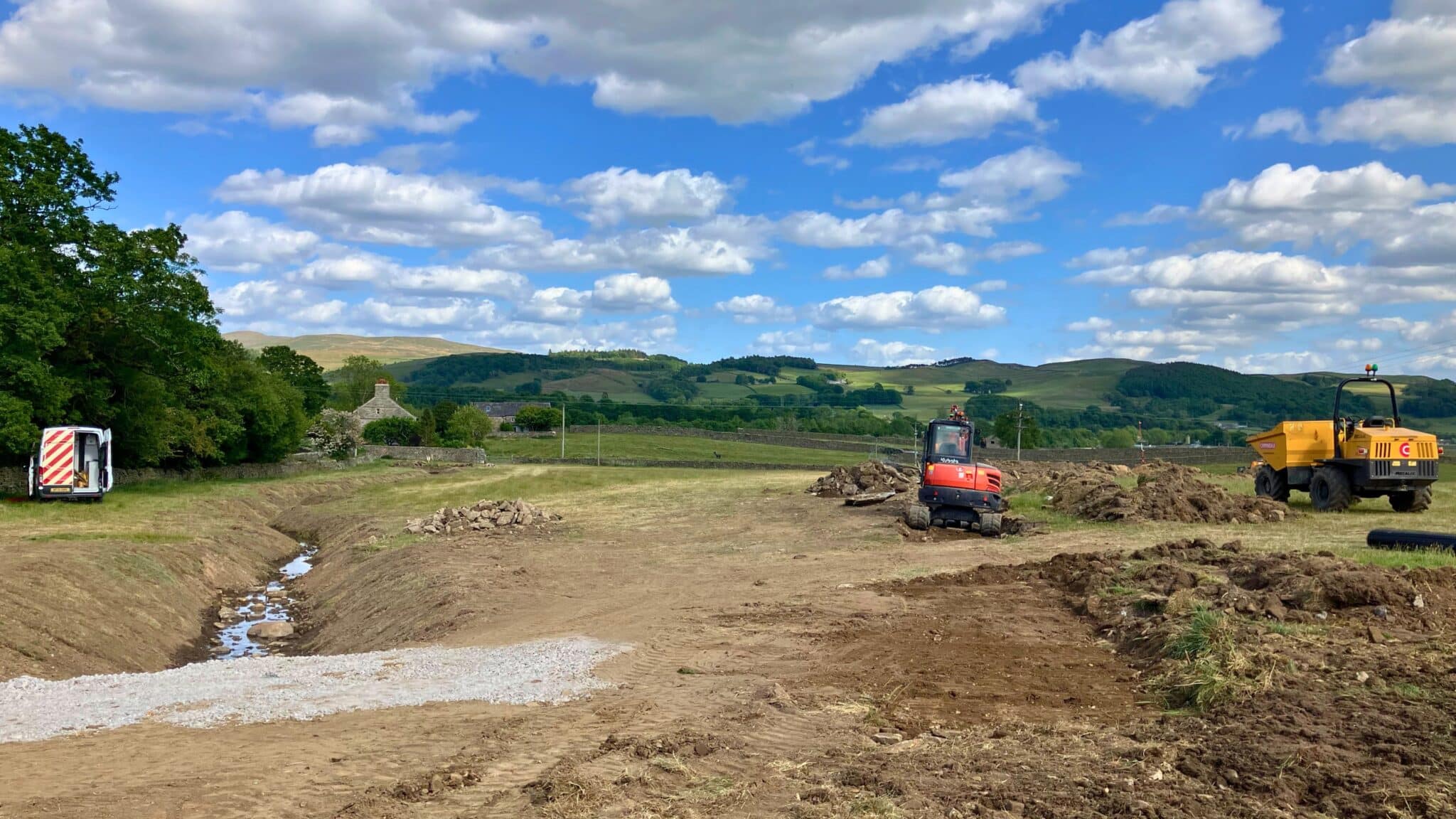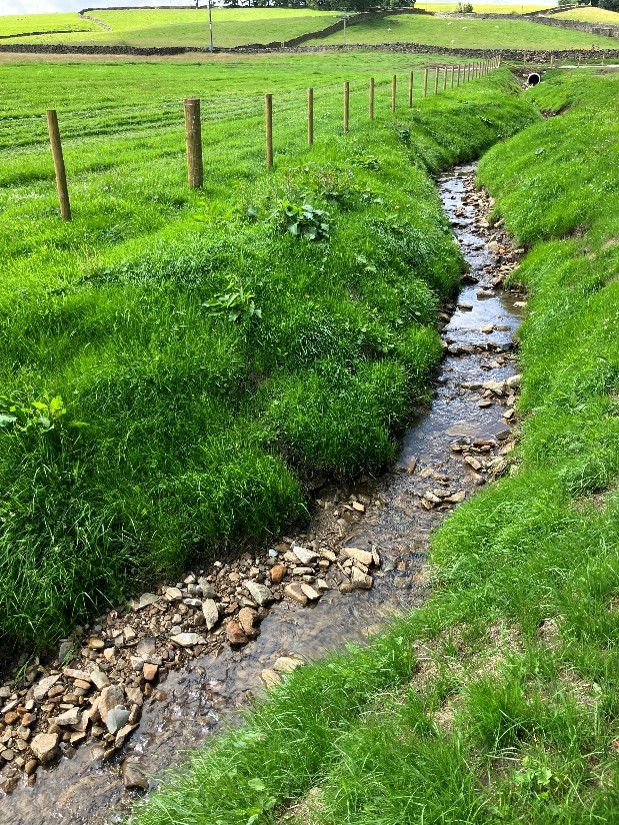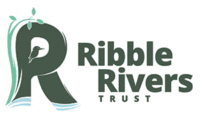
Lower Storth Gill Beck De-Culverting
Lower Storth Gill Beck, near Giggleswick, North Yorkshire is in the upper part of the Ribble Catchment. It’s an area that remains fairly natural, thanks in part to the lower populations and agricultural land use. However, like many watercourses in the area, Lower Storth Gill Beck has been straightened and culverted, which is far from ideal for wildlife. But, thanks to funding from Defra and the National Lottery, we’ve been able to work on some de-culverting and river renaturalisation works in the area. So, for the first time in decades, Lower Storth Gill Beck has seen daylight.
What is a culvert, and why are they a problem?
Historically, culverts (underground structures made from stone, pipe, or concrete) were introduced to maximize land use and improve efficiency for farming, development, and infrastructure projects. Their primary purpose is to channel water beneath roads, fields, and buildings. This makes it much easier to cultivate or build on the land.
However, while they can serve practical purposes, culverts often cause ecological problems. They tend to disrupt natural river processes and features, creating barriers that prevent wildlife from moving freely along the watercourse. As a result, culverts often become poor habitats themselves and obstruct the migration of fish and other aquatic species upstream.
Culverts can also lead to water stagnation, which increases the build-up of nutrients and fosters conditions ideal for invasive species. Additionally, they can increase flood risks by reducing the watercourse’s capacity or causing unseen blockages that lead to sudden and severe flooding. Historical maps of the Settle and Giggleswick area show many culverts dating back to the 19th century, reflecting their long presence in the area.

So what have we done to help?
Working with the local landowners, we have undertaken large-scale de-culverting along multiple lengths of a small watercourse. Much of the culvert has been removed (a process known as daylighting). Now the waterway is open to sunlight, encouraging aquatic vegetation growth and wildlife access. Plus, in some sections, a new, meandering channel has been constructed, featuring pools, riffles, and meanders. Using historical maps to influence our design, the new meandering channel closely follows the original path.

By restoring the natural shape and flow of the river, the project has created and enhanced habitats for fish, aquatic insects, and other wildlife. Excitingly, the new channel is already filling with gravels, which are essential for salmon spawning. Plus, we’re also discovering that wildlife such as invertebrates are moving into the habitat. On top of this, the open channel also improves local flood resilience by better managing surface water runoff.
As an additional bonus, we’ve also created a wetland area! This area will support numerous rare, specially adapted wetland wildlife species, as well as providing Natural Flood Management (NFM) benefits, by increasing upstream water storage.
So, what’s next?
The success of these projects has sparked interest among other landowners, leading to plans for further similar schemes in the area. We’re proud to continue restoring this vital habitat for wildlife and local communities alike.
Part of the Ribble Revival: Room for Rivers Programme
Funding for this project has come from the Species Survival Fund and it is part of our wider Room For Rivers programme. This £25 million initiative aims to restore over 3,300 hectares of habitat across the country. The National Lottery Heritage Fund administers the fund on behalf of DEFRA, and Ribble Rivers Trust has received £1.65 million to support our work. Fellow wildlife charities, farmers, and community groups nationwide have also benefitted the fund. Together, we’re helping to accelerate nature recovery and protect vital species.

Rivers are at the heart of our local landscapes. Whether you’re casting a line, exploring a riverside trail, or simply basking in the beauty of nature, you can help protect these special places now, and for generations to come.
By becoming a Ribble Rivers Trust supporter for just £3 a month, you’ll be funding real, on-the-ground action.
Ready to make a difference? Learn more here: ribbletrust.org.uk/become-a-supporter

